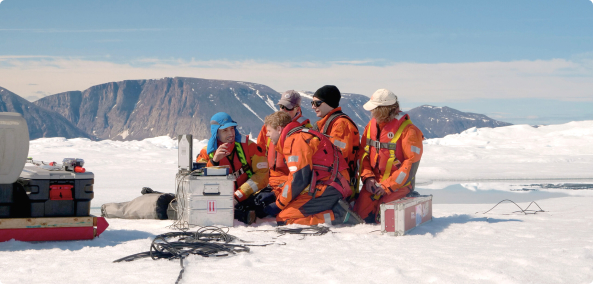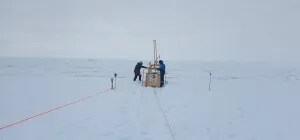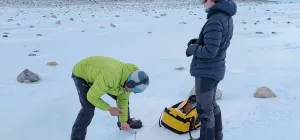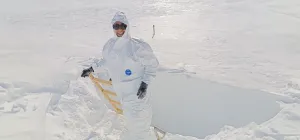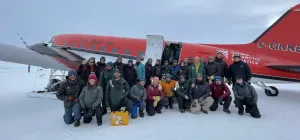The Dog Days of Antarctic Summer
While it is not uncommon for temperatures to rise above freezing in Antarctica in some places during the austral summer, temperatures above freezing are becoming more frequent than in previous years.
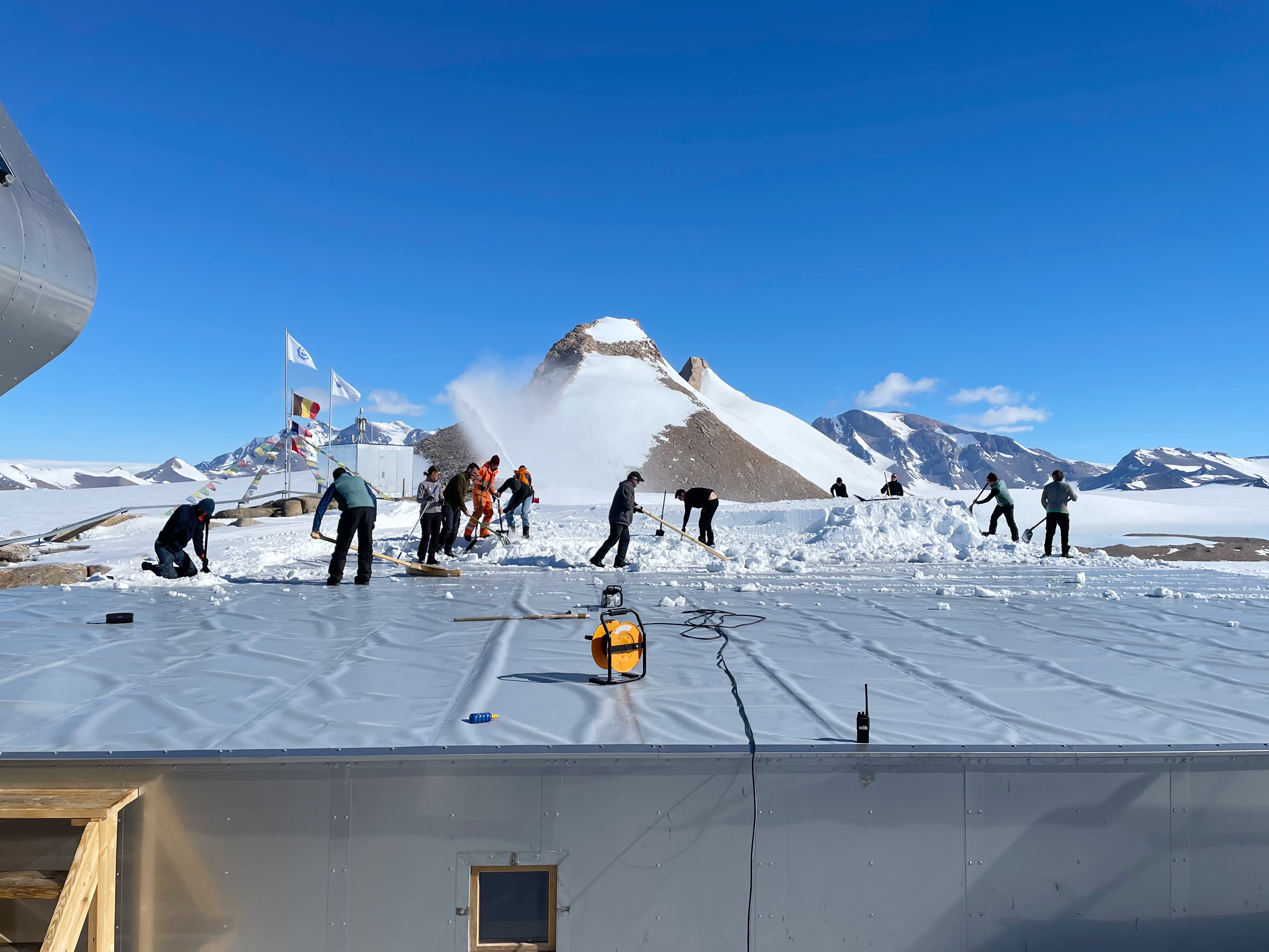
While it is not uncommon for temperatures to rise above freezing in Antarctica in some places during the austral summer, temperatures above freezing are becoming more frequent than in previous years.
During the last week of December 2024 and first week of January 2025, temperatures at the Princess Elisabeth Antarctica have peaked above freezing, reaching as high as 0.9°C. This has led to some interesting phenomena.
Not far from the station, in the wind scoop of Utsteinen nunatak, streams of water have formed and are meandering their way through several sastrugi, which are “waves” in the ice that the wind has carved out. It seems surreal to hear the trickling of water in a place that is primarily frozen most of the year.
A lot of snow has accumulated on the roof of the station’s annexes. With temperatures trending above freezing, it was necessary for the whole team to chip in one afternoon and shovel snow off of the roof to avoid pools of water forming on top of the annexes.
In general, snow accumulation in Queen Maud Land, East Antarctica, has been above average since last season. Several automatic weather stations and other scientific equipment throughout the region have almost been buried by snow. Greater snow accumulation can be a product of a warming climate, as warmer air masses can hold more moisture, which leads to greater precipitation.
Speaking of moisture, during the last week of December, a low-level fog hung around the station for about a day or so. It was impossible to see more than 20 meters ahead. The humidity was a whopping 80%! No one who had been at the station had seen anything like this at PEA, at least not in the past several years.
Very warm temperatures at the coast
Temperatures have climbed even higher in other parts of Queen Maud Land. This past week, scientists from the GEOMAG project from the Royal Meteorological Institute of Belgium went out to the King Baudoiun Ice Shelf with Alain Hubert and Tim Grosrenaud to take geomagnetic measurements at the same location where Belgian scientists took them back in the 1960s when Belgium’s King Baudoin station was still operational.
The GEOMAG team was able to successfully measure Earth’s magnetic field at the same location to see how it may have shifted over time. While these geomagnetic measurements had been taken a few times since the closure of the King Baudoin station, this is only the second time that such geomagnetic measurements have been taken since the Princess Elisabeth Antarctica has been operational.
However, what the scientists and IPF staff found at the coast were temperatures hovering around +8 to +10 C. Being close to the sea, temperatures in summer can climb relatively high on ice shelves, with pools of water sometimes forming on them for several weeks during the summer.
While at the coast, BELARE Team Leader Alain Hubert and Tim Grosrenaud also did a first reconnaissance to find the perfect spot for the cargo ship to unload its containers and other material when it arrives in mid-January. This reconnaissance is necessary to do every year as it is essential to assess the conditions of various ice shelves where a cargo ship can land. The edge of the ice shelf must be solid with no imminent cracks that could be deemed an unstable danger. It must also not be taller than 7-8 meters to ensure that the contents of the ship can be safely unloaded.
With these kinds of temperatures observed at the coast, it’s not uncommon to see streams of water pouring off some parts of the ice shelves. While impressive to see, this of course can be concerning, considering there must be some serious surface melt occurring for these freshwater rivers to form.
While this region of Antarctica has gained a sizeable amount of mass over the past two decades, because of increased precipitation at the coast, the question arises if the ice will continue to be replaced quicker than the rate of melt taking place in summer. Some of our scientists are studying exactly that phenomenon, and we’ll tell you more in the next instalment…
Download